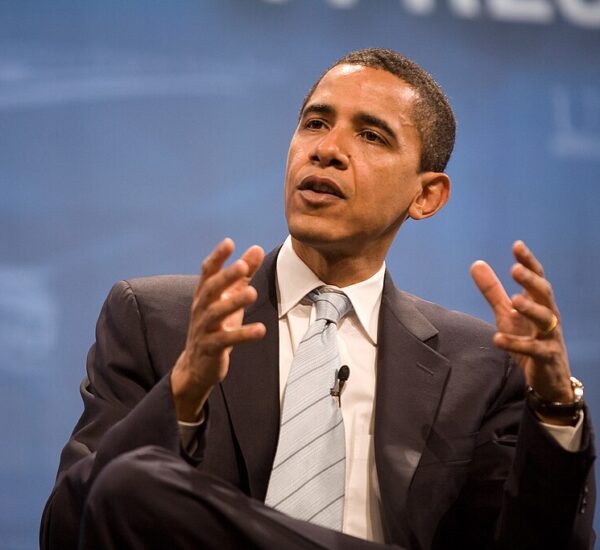White House Dealing With Major New GOP Issue
A new healthcare outline circulating inside the Trump White House is running into a reality Republicans have faced for over a decade: the conservative base wants Obamacare gone, but GOP lawmakers remain deeply split on how to get there.
According to multiple sources, President Donald Trump has been reviewing a temporary two-year extension of expiring Obamacare subsidies while tightening eligibility rules and restoring work-and-responsibility standards. But on Capitol Hill, the response has been mostly silence — signaling once again that Republicans are still debating whether to reform the law, replace it, or let the subsidies expire altogether.
Right now, no one knows whether Trump will formally release the plan.
⭐ Why It Matters: Massive Premium Hikes Hit January 1
The Affordable Care Act’s COVID-era tax credits expire on January 1, and experts warn that millions of Americans — especially seniors on fixed incomes — could see dramatic premium increases.
Democrats already shut down the government for six weeks demanding a clean extension. But some Democrats privately admit they may accept parts of Trump’s framework.
The real challenge is inside the Republican conference.
Many conservatives believe Obamacare continues to drive costs higher and want a full repeal. Others argue the votes simply aren’t there and prefer a temporary extension to avoid political fallout.
⭐ GOP Still Haunted by the 2017 Repeal Collapse
Republicans remember 2017, when the repeal effort fell apart after lawmakers couldn’t agree on how to protect Americans currently using government-run Obamacare exchanges.
Enrollment is now at record highs, making the issue more politically explosive than ever.
Senate Majority Leader John Thune, R-S.D., promised moderate Democrats a vote by mid-December in exchange for reopening the government. But no one in Washington believes a bipartisan deal is likely.
Healthcare remains one of the most divisive issues in American politics — and Democrats plan to weaponize it again in 2026.
⭐ Inside Trump’s Draft Plan: Major Conservative Changes
Sources familiar with the draft say the White House proposal includes several reforms that longtime conservative voters strongly support:
✔ New income caps
Tax credits would be limited at 700% of the federal poverty line, preventing higher-income households from cashing in.
✔ No more zero-premium plans
Every enrollee would pay some share of their coverage. Republicans say zero-premium plans opened the door to fraud, abuse, and waste.
✔ Expanded Health Savings Accounts
Americans enrolled in lower-tier plans (bronze or catastrophic) could deposit money into HSAs — strengthening choice and personal freedom.
A handful of Democrats have quietly signaled these ideas could be part of a broader negotiation.
⭐ Growing Support — But Not Enough Yet
Rep. Mike Flood, R-Neb., said the business-focused Main Street Caucus supports Trump’s push to stop the “tax credit cliff.”
Rep. Brian Fitzpatrick, R-Pa., calls a two-year extension the “sweet spot” most lawmakers can live with.
But House Speaker Mike Johnson hasn’t promised a vote.
Many conservatives want deeper reforms — or the end of subsidies altogether.
Complicating matters, Republicans led by Thune want abortion restrictions included in any deal — a non-starter for Democrats.
⭐ What Happens If Congress Does Nothing
If lawmakers fail to act:
- Enhanced subsidies vanish
- Premiums for millions could more than double
- Seniors on fixed incomes could face severe financial strain
- Democrats will blame Republicans throughout 2026
Enrollment for next year began Nov. 1, meaning millions are already preparing for higher costs.
Sen. Chuck Schumer, D-N.Y., is already repeating the Democrat attack line:
“When premiums spike, voters will know Republicans caused it.”
⭐ Republicans Seek Their Own Conservative Alternative
The government shutdown gave GOP lawmakers an opening to revisit their own replacement ideas:
✔ Sen. Rick Scott’s “Trump Health Freedom Accounts”
- Massive expansion of personal savings accounts
- Full shopping across state lines
- Cuts government dependence
✔ Sen. Bill Cassidy’s targeted savings-account bill
- Creates accounts to offset out-of-pocket expenses
- Replaces enhanced subsidies
Democrats have already declared both proposals “dead on arrival.”
Some Republicans are exploring a reconciliation path modeled after Trump’s 2017 “Big Beautiful Bill,” which could pass with zero Democrat votes. But that approach is politically risky and could drag into the midterms.
⭐ Trump Sends Mixed Signals
While Republicans look for direction, Trump has taken aim at insurance companies, repeatedly saying he wants money sent directly to the American people — not big healthcare corporations.
On Nov. 18, Trump posted:
“THE ONLY HEALTHCARE I WILL SUPPORT OR APPROVE IS SENDING THE MONEY DIRECTLY BACK TO THE PEOPLE… Congress, do not waste your time and energy on anything else.”
Many lawmakers are waiting for Trump to lay out a final, official position.
⭐ Bottom Line
Republicans now face a defining moment:
Support Trump’s draft plan, push for a conservative overhaul, or let Obamacare subsidies expire and brace for the political blowback.
Millions of Americans — especially older, fixed-income families — are watching closely as premiums continue to rise.
This story isn’t going away. And neither is the pressure on Congress.






